If you’re familiar with tarot or oracle spreads, you may use the rune cards in a similar manner. If you’re new to cartomancy, following are some recommended layouts and tips on how to interpret them.
Introduction to the Runes
The runes of the Elder Futhark comprise a writing system of 24 sound-symbols. As with the alphabet (named for the first two letters A-B), the term futhark is named for the first six characters: Fehu – Uruz – THurisaz – Ansuz – Raidho – Kenaz.
Prior to being adopted as a writing system, the runes provided a link to more liminal aspects of reality. In addition to its literal meaning and sound value, each rune is associated with a psycho-physical aspect of consciousness, one of the Norse deities, one of the nine realms of existence (excluding Midgard, which is represented by the runecaster), and one of the Classical elements. Additional associations may be made with chakras, colors, astrological planets, gemstones, body parts, and more.
Keywords are provided for each rune, but these should be considered as guiding examples, not comprehensive lists. As your experience with the runes increases, you may develop your own associations and keywords. For runes that can be reversed, the opposite meaning should be associated when the rune appears in that orientation within the runecasting.
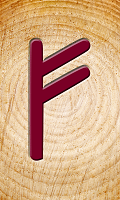 Fehu | 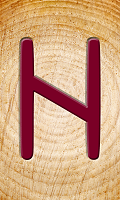 Hagalaz | 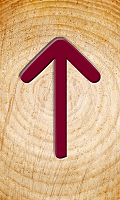 Tiwaz |
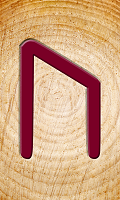 Uruz | 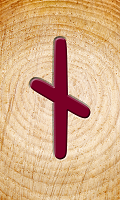 Nauthiz | 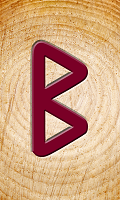 Berkano |
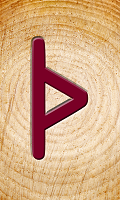 Thurisaz | 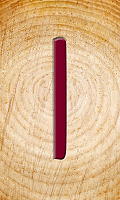 Isa | 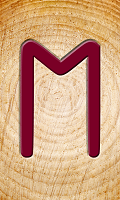 Ehwaz |
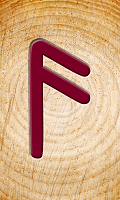 Ansuz |  Jera |  Mannaz |
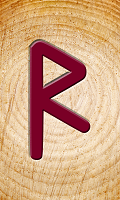 Raidho | 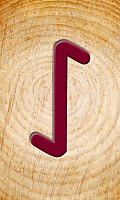 Eihwaz | 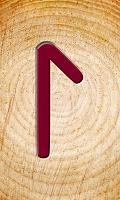 Laguz |
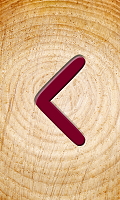 Kenaz |  Perthro | 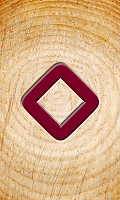 Ingwaz |
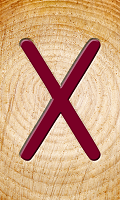 Gebo | 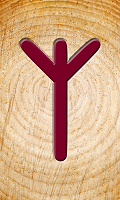 Elhaz | 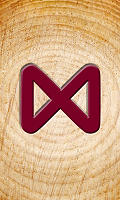 Dagaz |
 Wunjo | 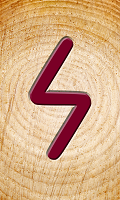 Sowilo | 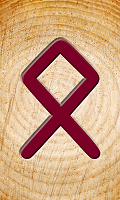 Othala |
Fehu
- Sound: Fire
- Meaning: Cattle
- Level: Physical
- Deity: Odin
- Realm: Niflheim
- Element: Earth
- Image: An ox with upraised horns
- Keywords: Wealth, resources, support, potential
Uruz
- Sound: Moon
- Meaning: Aurochs
- Level: Physical
- Deity: Tyr
- Realm: Asgard
- Element: Earth
- Image: An aurochs preparing to charge
- Keywords: Strength, motivation, procreation
Thurisaz
- Sound: Thing
- Meaning: Giant
- Level: Physical
- Deity: Thor
- Realm: Jotunheim
- Element: Fire
- Image: War hammer
- Keywords: Boundaries, defense, organization
Ansuz
- Sound: Ahh
- Meaning: Deity
- Level: Physical
- Deity: Freyja
- Realm: Svartalfheim
- Element: Earth
- Image: Odin’s cloak and beard billowing in the wind
- Keywords: Inspiration, guidance, communication
Raidho
- Sound: Ritual
- Meaning: Ride
- Level: Physical
- Deity: Baldur
- Realm: Muspelheim
- Element: Earth
- Image: Horse’s hindquarters hitched to a wagon
- Keywords: Right-action, ritual, true path
Kenaz
- Sound: Keep
- Meaning: Torch
- Level: Physical
- Deity: Hel
- Realm: Helheim
- Element: Fire
- Image: Torch casting its own shadow
- Keywords: Knowledge, understanding, creativity
Gebo
- Sound: Gather
- Meaning: Gift
- Level: Physical
- Deity: Njord
- Realm: Vanaheim
- Element: Æther
- Image: Hands clasped in greeting
- Keywords: Generosity, balance, fair trade
Wunjo
- Sound: Wisdom
- Meaning: Joy
- Level: Physical
- Deity: Frey
- Realm: Ljossalfheim
- Element: Earth
- Image: Tribal banner
- Keywords: Joy, achievement, completion
Hagalaz
- Sound: Heavy
- Meaning: Hail
- Level: Psychological
- Deity: Odin
- Realm: Niflheim
- Element: Water
- Image: Bridging of Mist-Home and Fire-Home
- Keywords: Cleansing, purification
Nauthiz
- Sound: Normal
- Meaning: Need
- Level: Psychological
- Deity: Tyr
- Realm: Asgard
- Element: Water
- Image: Bow drill for fire-starting
- Keywords: Necessity, emergency, innovation
Isa
- Sound: Seed
- Meaning: Ice
- Level: Psychological
- Deity: Thor
- Realm: Jotunheim
- Element: Æther
- Image: Icicle
- Keywords: Individuality, integrity
Jera
- Sound: Yesterday
- Meaning: Year
- Level: Psychological
- Deity: Freyja
- Realm: Svartalfheim
- Element: Water
- Image: Sickle scything into a stalk of grain
- Keywords: Harvest, full cycle, trust, patience
Eihwaz
- Sound: French u
- Meaning: Yew tree
- Level: Psychological
- Deity: Baldur
- Realm: Muspelheim
- Element: Water
- Image: Branching yew tree
- Keywords: Transformation, death-and-rebirth
Perthro
- Sound: Pot
- Meaning: Lot cup
- Level: Psychological
- Deity: Hel
- Realm: Helheim
- Element: Fire
- Image: Lot/dice cup on its side
- Keywords: Fortune, fate, randomness, orlog
Elhaz
- Sound: Zebra
- Meaning: Elk
- Level: Psychological
- Deity: Njord
- Realm: Vanaheim
- Element: Air
- Image: Elk’s antlers
- Keywords: Protection, mentor, attunement
Sowilo
- Sound: Source
- Meaning: Sun
- Level: Psychological
- Deity: Frey
- Realm: Ljossalfheim
- Element: Water
- Image: Lightning bolt, annual path of the sun
- Keywords: Energy, soul, motivation, success
Tiwaz
- Sound: Tuesday
- Meaning: Tyr
- Level: Spiritual
- Deity: Odin
- Realm: Niflheim
- Element: Air
- Image: Spear point, or arrowhead
- Keywords: Honor, self-sacrifice, ordered conduct
Berkano
- Sound: Berry
- Meaning: Birch
- Level: Spiritual
- Deity: Tyr
- Realm: Asgard
- Element: Fire
- Image: Twin-lobed birch tree seed, or a mother’s breasts
- Keywords: Nourishment, growth, endurance
Ehwaz
- Sound: Pleasure
- Meaning: Horse
- Level: Spiritual
- Deity: Thor
- Realm: Jotunheim
- Element: Air
- Image: Horse’s head; bridle and reins
- Keywords: Intuition, trust, instinct, gut feeling
Mannaz
- Sound: Moon
- Meaning: Human
- Level: Spiritual
- Deity: Freyja
- Realm: Svartalfheim
- Element: Air
- Image: Reflection; Union of two equals
- Keywords: Unity, cooperation, mind, meditation
Laguz
- Sound: Leek
- Meaning: Lake
- Level: Spiritual
- Deity: Baldur
- Realm: Muspelheim
- Element: Earth
- Image: Wave crest
- Keywords: Emotions, relationship, life energy
Ingwaz
- Sound: Sing
- Meaning: Yngvi-Frey
- Level: Spiritual
- Deity: Hel
- Realm: Helheim
- Element: Æther
- Image: Spark; burning ember
- Keywords: Inspiration, Inner drive, incubation
Dagaz
- Sound: Dig, There
- Meaning: Day
- Level: Spiritual
- Deity: Njord
- Realm: Vanaheim
- Element: Æther
- Image: Sunrise/sunset
- Keywords: Cycle, awakening, fun, blessing
Othala
- Sound: Boat
- Meaning: Inheritance
- Level: Spiritual
- Deity: Frey
- Realm: Ljossalfheim
- Element: Air
- Image: Homestead; house framing
- Keywords: Home, security, reward, continuity
The Web of Wyrd
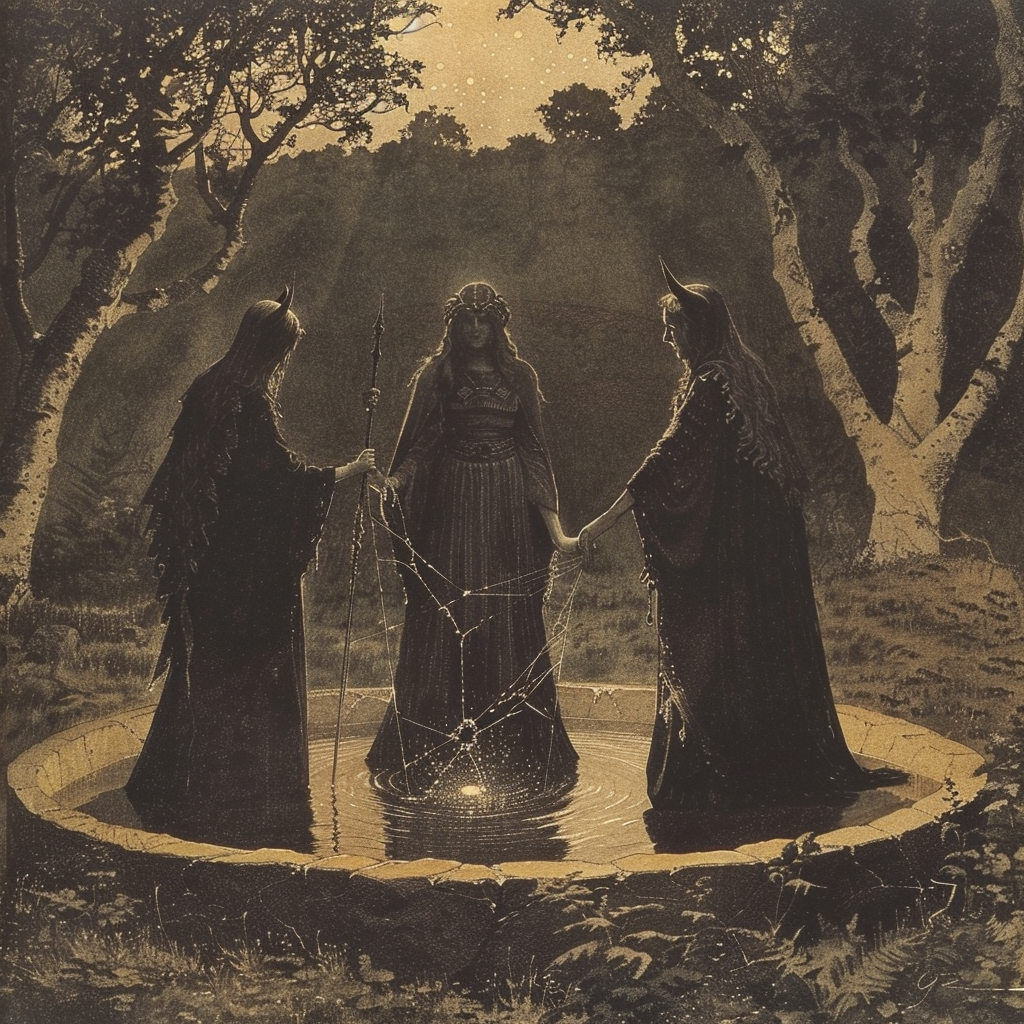
The Norse idea of destiny centered on the divine figures of the three Norns gathered about the Well of Urdh (Old English, Wyrd, from which we get the word weird). Similar to the Greek Fates, the Norns collectively spun, wove, and cut the threads that formed the Web of Wyrd.
The first of the Norns is Urdh, associated with the past, with foundations or primal energy. Verdandi stands for the present. Finally, Skuld represents outcome or debt.
Contrary to the fatalistic view that many have of the Norse/Viking mindset (“If I die, I die…”), the Norns represent a very practical notion of how the universe works.
Urdh is etymologically associated with origin, orlog (urlog), which has a close connection with the Vedic dharma, meaning destiny or life-purpose.
Verdandi represents not simply the present, but that which is becoming. Specifically, she stands for the development from the origin, through the sequence of choices and circumstances, to the present unfolding of events.
Skuld is closely linked to the word should. Rather than a carved-in-stone declaration of the future, she represents an extrapolation, a projection into the future of the current course of events and pattern of choices. Skuld can be seen as a welcome banner (see Wunjo, above) or as a warning beacon.
This first runecasting is based on Odin’s visit to the Well of Urdh, preceding his discovery of the Runes and the furtherance of his mission to humanity. The spread provides a snapshot of the subject’s circumstances and state of mind.
Shuffle the deck three times, and cast the cards in the order shown below. The reading may be interpreted as follows.
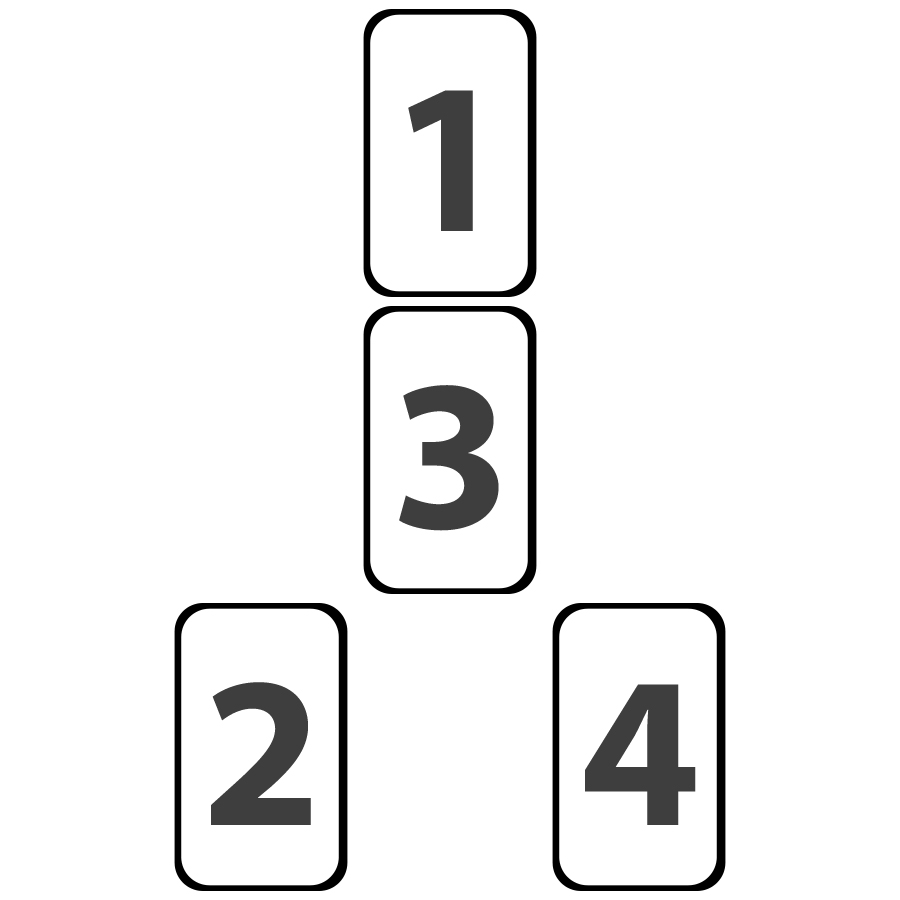
(1) Odin (Woden) – Self
This rune represents the subject of the runecasting in the specific situation. It describes the mindset, emotional condition, even the physical circumstances in which she finds herself. All other runes in the casting should be interpreted within the context of the Odin rune.
(2) Urd – Origins
This rune represents the recent past, the series of circumstances that have brought the subject to where she is. It informs the past and/or her view of it.
(3) Verdandi – Becoming
Philosophers and self-help gurus broadly proclaim that there is only the present moment, the ever-becoming Now. The ancient Norse held a similar view. This rune stands for the experience, the present realization of the subject within her situation. This is the Now, the Becoming of all the forces and events of the past into the present moment.
(4) Skuld – Probable Future
As with the idea Karma (an Indo-European cousin to the Norse mindset), Skuld represents the likely or deserved outcome of the preceding, defining circumstances. This rune represents the trajectory of the preceding runes.
Expansion
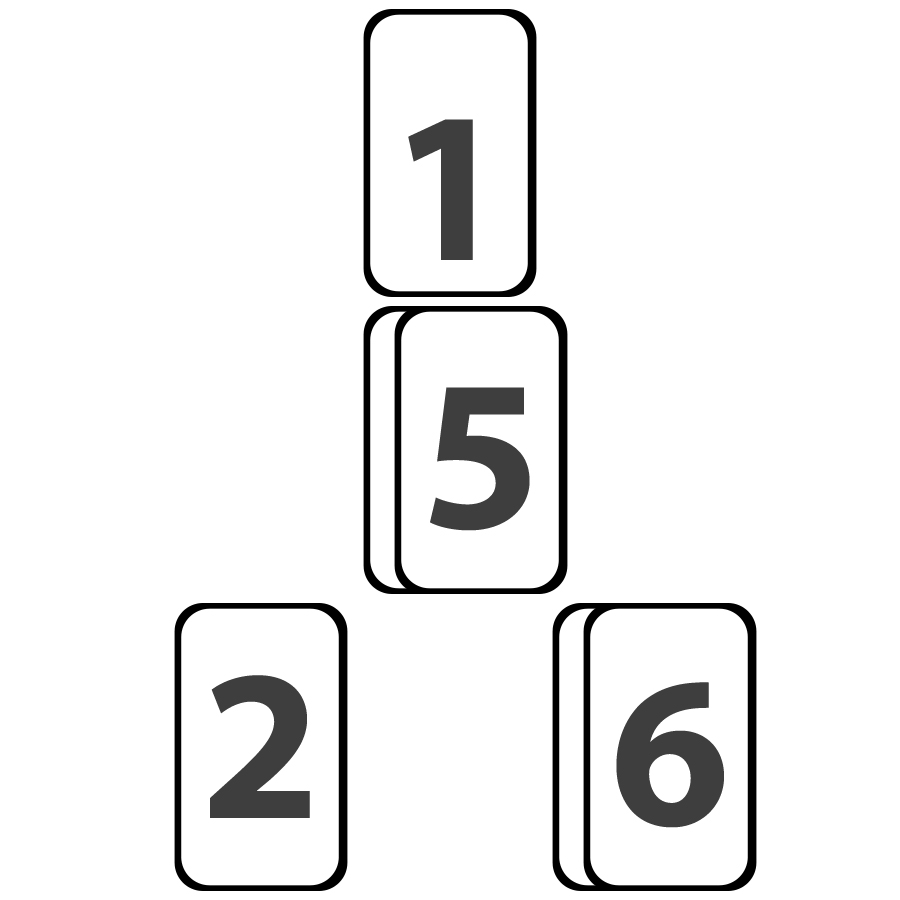
If the initial runecasting is vague or otherwise unsatisfactory, feel free to expand on it. For a specific casting, leave the Odin and Urdh cards as initially cast.
Flip over a new card (5) and place it over the previous Verdandi card (3). Then place a new card (6) over the first Skuld card (4). These represent a new choice or action on the part of the client, along with the likely, revised outcome.
The Five Elements

While Classical Mediterranean cultures recognized four primal elements, the original Indo-European cosmogony included the fifth element, or quintessence.
For the ancient Germanic wizards (wise ones), these elements (in order of increasing density) were Æther, Air, Fire, Water, and Earth. These correspond to the elements in Chinese and East Indian (Vedic) modalities, with the transposition of Wood for Æther and Metal for Air.
Æther is the rarest of elements, and represents the first expression of raw cosmic energy into manifestation. This is the element of expansion, of becoming.
Air is the first of the tangible elements, directly perceptible by touch, hearing, and smell. Only its effects can be observed by the other senses. This is the element of contraction, as the ethereal condenses into physicality.
Fire adds the sense of sight to direct perception. It is the rising element, even as flames rise from the hearth.
Water brings taste to the equation, as saliva awakens taste buds upon the tongue. This is the descending element, running downhill from source to sea, where it always finds its level.
Finally, Earth stands for the completion of the preceding elements. The most dense of all, it represents the center, the fixation of what has gone before.
The Five Elements runecasting is intended for a broader view than the Web of Wyrd, and places the subject of the runecasting within the context of her relationships. The order of the runes is based on directional associations (Center-North-East-South-West), rather than density as presented above.
(Note that the directions of this runecasting are based on the ancient Indo-European worldview of North as down and South as up. If you are more comfortable with the modern convention, you may place the second card above the center, and proceed clockwise.)
Shuffle the deck three times, and cast the cards in the order shown below. The reading may be interpreted as follows.
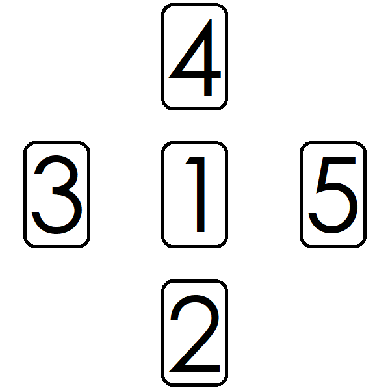
(1) Earth (Center) – Self
As in the Web of Wyrd runecasting, the first card represents the subject in her particular situation, the experiential world. Though relatively dense and fixed, it can be impacted by the workings of the other elements.
(2) Water (North) – Static Forces
This rune stands for those elements (people, circumstances, etc.) that seek to maintain the status quo. This is water seeking its own level, those forces that seek equanimity, stasis. As water combines with earth to form clay, this rune represents those forces that seek to keep the subject and/or situation as-is.
(3) Æther (East) – Expansive Power
The Æther rune represents the forces that seek to raise the subject to her highest potential. Think Robin Williams’s character Sean Maguire in Good Will Hunting. The subject may not always appreciate the challenging influence or input of this rune, but the ultimate aim is for the highest good.
(4) Fire (South) – Activating Forces
Fire is a motive force that changes one condition into another. Wood transforms into ash, metal or ice becomes liquid, liquid turns to vapor. In the process, heat and light are released to provide comfort and guidance, or possibly destruction. This rune represents those forces that motivate the subject into action.
(5) Air (West) – Contracting Power
Like a cool breeze on a summer evening, the force behind this rune seeks the comfort and sensual pleasure of the client. This energy is that of the mother who seeks comfort and ease for her children, even if that means they can’t quite achieve their full potential—regardless, they’ll be safe from harm. Not a bad place to be, but it lacks the ultimate fulfillment of Æther.
The Nine Worlds

Norse cosmology centers on the great world tree, Yggdrasil, which contains among its roots and branches the nine realms of manifest reality. From the heights of Asgard—fortress of the Celestial Deities—to the depths of Hel’s Home, the loftiest and lowest aspirations of man or giant or god bear fruit upon the tree.
This casting provides a deep and intimate view into the psyche of the client. Each rune position represents an aspect of the compound mind that makes up a human being, and reveals aspects of the subject of the runecasting, of which they may be unaware.
As with the Five Elements layout, this runecasting is based on the ancient reckoning of North as down, South as up. If you prefer the modern convention, you may place the second card above the center, then proceed in a clockwise fashion.
Shuffle the deck three times, and cast the cards in the order shown below. The reading may be interpreted as follows.
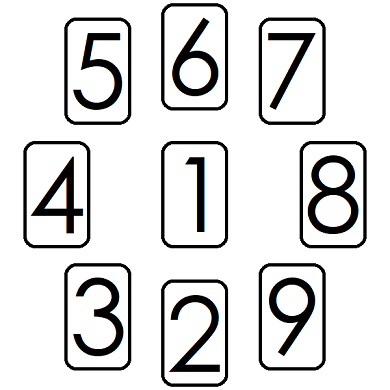
(1) Midgard (Center) – Conscious Mind
As Midgard represents the world of ordinary experience, the central card establishes the subject’s conscious state of mind in the context of her present circumstances. If the subject has posed a specific question or challenge, this rune is representative of that.
(2) Niflheim (North) – Intuitive Mind
Niflheim is the realm of unmanifest potential. Just as it represents forces or energies that have yet to come into physical existence, so the Intuitive Mind has access to those things not yet manifest. This rune represents those forces that are coming into being for the subject, but of which she may not yet be aware.
(3) Asgard (Northeast) – Superconscious Mind
As the fortress of the Celestial Deities, Asgard represents the Superconscious Mind. This is the part of Mind that transcends time and space, that sets the objectives for a specific incarnation. This rune represents the subject’s relation to her dharma, destiny, or life purpose.
(4) Jotunheim (East) – Ego
The East is the land of the Jotuns, the border realm patrolled by Thor to protect the gods and humanity from the titanic forces. In the same way, the Ego stands as guardian between the individual and external forces. This rune represents the subject’s identity, individuality, and sense of self.
(5) Svartalfheim (Southeast) – Subconscious Mind
The Southeast is the realm of the Dark Elves, or Dwarves. These craftsmen to the gods provided the weapons and tools wielded by the Aesir and Vanir to carry out their attendant duties. So too, the Subconscious Mind provides the tools to carry out the individual’s daily activities. It is the unfailing servant of the Conscious Mind.
The Subconscious Mind is the storehouse of information such as phone numbers, birthdays, and addresses. But more than simply facts, it also stores patterns of cause-and-effect, the programming by which we conduct our lives.
This rune stands for the subject’s internal programming, her ingrained emotional responses, and habitual ways of being. It represents how her learned responses and adaptive behavior are helping or hindering the situation at hand.
(6) Muspelheim (South) – Energy Body
In Norse cosmology, Fire Home provided the activating force that sparked physical creation out of the infinite potential of Niflheim. This rune stands for the action best taken by the subject of the runecasting to make progress in the situation at hand. Reversed, it may indicate an action to be avoided, or it may reveal how her present actions or inaction are standing in the way of her progress.
(7) Helheim (Southwest) – Unconscious Mind
Though often equated with the Christianized Hell, the Norse Hel Home was the place of reflection and contemplation between lives, similar to the Greek Tartarus or Hebrew Sheol. Governed by the goddess Hel, this is the realm of ultimate transformation and of preparation for a new incarnation, a new way of being.
The Unconscious Mind is a deep and mysterious realm. It impacts the individual’s actions and reactions in ways that are often unknowable and inexplicable. It is the source of dreams, knee-jerk reactions, innate abilities, Freudian slips, and inherent phobias.
This rune signifies the manner in which the Unconscious Mind is acting upon the subject’s present circumstances. It suggests the hidden aspects of the personality that are playing into the situation.
There is a direct connection between the Unconscious and Subconscious, and the runes in the (3) and (7) positions should be considered in relation to one another. The Superconscious Mind sits as a lid above the boiling pot of the Unconscious. If both runes are reversed, this can signify a major imbalance, a potential spilling over of the psyche into conscious reality.
A reversed rune in this position suggests major unconscious blocks between the client and the best outcome of the situation. Meditation, introspection, and possibly psychotherapy may be required to rectify the situation.
(8) Vanaheim (West) – Empathic Mind
Norse mythology describes a primordial war between the Vanir and Aesir, the elder gods and the celestial deities. These competing races represent the forces associated with time and space (the elder gods, Vanir, linked to physical existence and procreation), and those associated with more abstract, conceptual ideals (knowledge, justice, individuality—auspices of the Aesir like Odin, Tyr, and Thor).
This eighth rune stands for the subject’s experience of the outer world, the realm of the Vanir. This manifests both in physical experience and in relationships with others.
(9) Ljossalfheim (Northwest) – Higher Consciousness
The Home of the Light Elves represents the culmination of life experience. The Light Elves are variously associated with the Western ideal of Ascended Masters, and with the indigenous notion of the Ancestors who guide and advise those of us still on a physical journey.
This rune represents the relation between the subject and the sources of higher wisdom available to her. This may be in the form of living elders, deceased ancestors, or other forms of mentorship—the ways in which one speaks to oneself through different voices.
As the pinnacle of the runecasting, it also stands as the most meaningful source of guidance for the client. Upright it shows a positive course of action. Reversed, it indicates the most effective area for growth, remediation, or correction.
